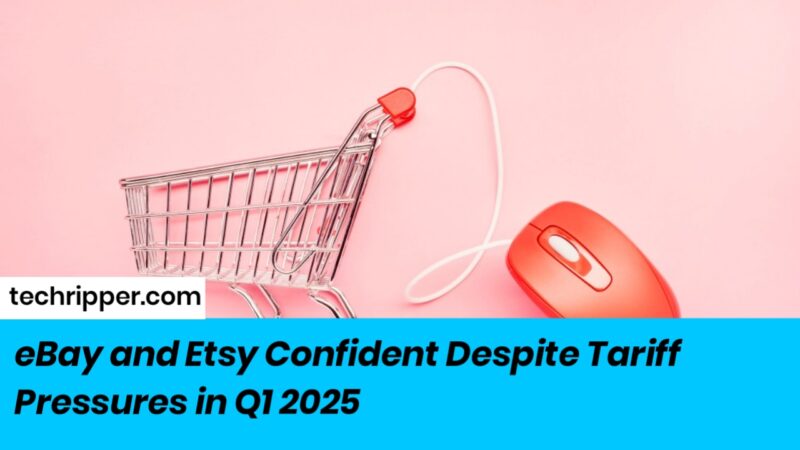The secondhand industry has been significantly impacted by the ongoing tariff situation, particularly following President Donald Trump’s policies. However, both eBay and Etsy remain relatively resilient despite the challenging economic environment.
eBay’s Resilience
eBay’s approach to dealing with tariffs is reflected in its minimal exposure to Chinese imports. The company’s CEO, Jamie Iannone, mentioned that China accounts for less than 10% of eBay’s total gross merchandise value (GMV), with greater China contributing around 5%. The majority of eBay’s sellers source products locally, which means they are less vulnerable to tariff hikes.
In Q1 2025, eBay reported solid performance, with a GMV growth to $18.8 billion and a revenue increase of over 1%, reaching $2.58 billion. The company’s focus on used and refurbished goods, which make up over 40% of its inventory, has positioned it well for price-conscious shoppers who are turning to secondhand products to avoid tariff-induced price increases.
eBay’s CFO, Steve Priest, noted that demand in their focus categories has remained strong, and the company has benefited from a slight “pull forward” in consumer spending due to concerns over increased customs complexities. The secondhand market’s appeal is proving strong, as customers look for more affordable options amid rising costs.
Etsy’s Challenges and Opportunities

Etsy has also demonstrated resilience, but the company faces its own challenges. Etsy’s primary focus on handmade, vintage, and higher-priced items means it may be more vulnerable to shifts in consumer behavior. Etsy’s CEO Josh Silverman acknowledged that most of Etsy’s sellers, who are mostly solo entrepreneurs, source their supplies domestically. Despite the relatively low exposure to tariffs, Etsy has seen a decline in active buyers by 3.4% year-over-year, with habitual buyers dropping by 11%.
In addition, Etsy reported an 8.9% decline in gross merchandise sales (GMS) for the marketplace to $2.3 billion. However, Etsy continues to benefit from its acquisition of Depop, a popular secondhand fashion platform that has seen record-high GMS since being integrated into Etsy’s portfolio. While Etsy navigates economic uncertainty and consumer hesitation, its ability to adapt remains strong.
The Bigger Picture
Both companies face challenges with economic uncertainty, as buyers become more hesitant to spend amid inflation and recession fears. However, eBay’s model of offering used and refurbished goods positions it as a go-to platform for consumers seeking more affordable alternatives to new products. Etsy, on the other hand, is benefiting from Depop’s performance, even though its vintage and handmade goods focus is currently seeing less demand.
Despite these mixed results, both companies have shown a strong ability to navigate turbulent macroeconomic conditions and remain confident in their future prospects.
In conclusion, while the secondhand market faces its share of challenges due to tariffs and changing consumer behavior, eBay and Etsy’s strategies have allowed them to continue thriving in a tough landscape.
Also Read : Airbnb Rolls Out AI Customer Service Bot in the U.S.








